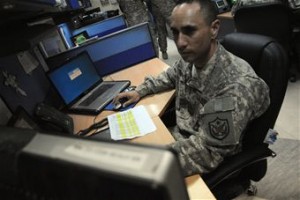How the Iraq War made the US military greener


During the height of the Iraq War, the US military maintained hundreds of computers, which required it to produce a significant amount of power. Its solution was to deploy a specialized secure operating system to consolidate many tiers of classified information onto a single system.
My colleague Melissa Mahony’s story, “U.S. Army finds energy independence in their tents,” reminded me of a conversation that I had with a senior official in the Information Assurance Directorate (IAD) of the NSA nearly two years ago.
The official described how embedded systems maker Green Hills Software’s Integrity-178B operating system was deployed by the military.
Green Hills’ software is used in everything from hybrid cars to fighter jets and farm equipment. Its Integrity OS was also given a high security rating by NSA after nearly a decade long review process.
Integrity enabled information with different levels of classification (ranging from Internet access to top secret and classified) to reside on a single computer, thus requiring fewer computers. That is significant because running computers in the Iraqi desert requires a lot of cooling - not mention the logistical issues of space and weight.
However, the military still had to define roles for data access to sufficiently protect those different tiers, as well as the requirement to have separate networks to handle each classification of data.
While this is not exactly breaking news, it’s an interesting example of how necessity can drive innovation. I wonder how many cloud computing providers have taken similar steps to consolidate hosted sessions to save energy give how the cloud is turning heads as a form of greener IT.
This post was originally published on Smartplanet.com